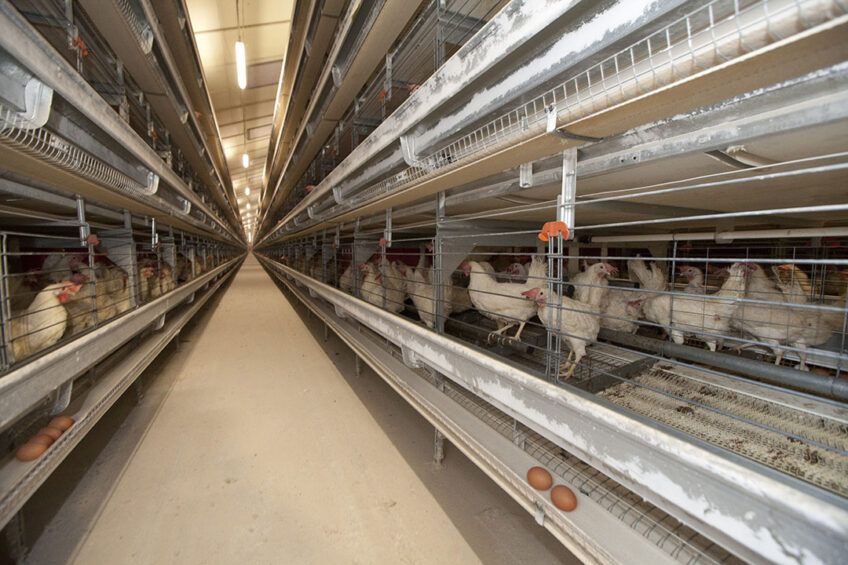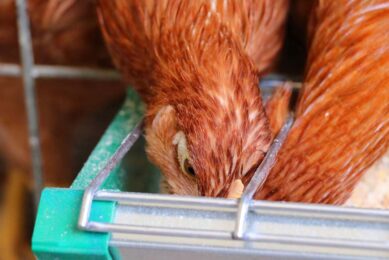Thoughts on future-ready layer operations

With pressure on caged layer systems mounting, US producers are looking for alternatives. The combi systems, as they are known, offer a solution that is close to what farm operators are used to, but is such a system really future-ready in the eyes of both the producer and the consumer?
Many producers looking to transition from caged to cage-free egg production have considered investing in combi systems, which are also referred to as combination or convertible systems. These are often touted as an ideal solution for poultry houses due to a few key selling points, such as higher bird densities and the lower cost of installation compared with other systems. In fact, that is exactly why they were developed — to improve upon the alternatives for floor systems and aviaries. Unfortunately, there are some misconceptions which could eventually lead to buyer’s remorse for producers. Below are 5 common beliefs about combi systems and the reasons to doubt each of them.
Bird training
One of the biggest reasons for the development of combi systems was to reduce the importance of pullet training. Training is critical to the success of multi-tier aviaries because birds must begin learning from day 1 how to move between the various levels of the house. This training helps ensure birds find water and nests positioned at the mid-level of the aviary to minimise floor eggs. By contrast, the idea behind combi systems is to place water and nests on every level, theoretically eliminating the need to train birds to move from level to level. However, experience has shown that without training, birds tend to congregate on just one level of the house, resulting in a variety of issues, including overcrowding, reduced egg quality and stress-related bird behaviours, such as feather pecking.
Ability to close doors
Many combi systems include doors that can be closed. Producers often view this as a benefit, opting to close birds in during the initial weeks after a flock is introduced to a layer house, to help ease their transition from the pullet house. However, birds tend to get lazy when closed in for extended periods of time, since they are unable to move around, jump and perform natural bird behaviours.
Interview: Different ways to farm eggs
Canadian Jon Krahn was selected for the Young Egg Leader programme of the International Egg Commission. One year into the programme he shares his experience with Poultry World. Read more…
A level of atrophy may also develop, resulting in reduced bird performance. Additionally, by the time the doors are eventually opened, the birds may have forgotten much of their training and are now less prepared for life in the layer house. They will likely congregate on one level of the house resulting in many of the same problems associated with poorly trained birds.
Reduced labour
Combi systems are often thought to require less management due to having water and nests on every level. Nonetheless, birds in a combi system often tend to congregate on one level, especially if they were not well trained as pullets. Having a disproportionate number of birds on the same level overwhelms the nests with eggs. In fact, producers can find twice the number of desired eggs on that level which can result in a higher incidence of low-quality eggs. The greater bird density can also lead to other issues, such as hot spots and increased bird mortality. The only way to correct these problems is with more hands-on management to manually distribute birds throughout the house. Not only does this added labour cost more money, it can also be difficult to find employees who are willing to do these types of tasks.
The complexity of combi systems adds another layer of management needs. For instance, having nests on every level requires more egg belts, plus there are more places where dirt, dust and other contaminants can accumulate. Consequently, more labour is required to clean combi systems compared with multi-tier aviaries.
Return on investment
At first sight, combi systems appear to provide a superior return on investment. They offer higher stocking densities than are possible with floor systems or aviaries. The cost of installation is less than for multi-tier aviaries. However, by actually running the numbers, producers will find that the long-term return on investment is not as good as with multi-tier aviaries. The increased labour requirements of combi systems greatly hinder the return on investment and this has become a major struggle, especially for large producers that have installed these systems.
An even bigger disadvantage is the lower percentage of Grade A eggs. The egg belt design of combi systems, apart from having too many top-level eggs, results in dirtier eggs, more cracked eggs and, in general, reduced egg quality than would be obtained with a typical multi-tier aviary.
Broiler breeders prefer wooden nests
Number of eggs, fertility and hatchability – as a broiler breeder operation there are many parameters to keep on top of. One extra headache is the number of floor eggs as they involve extra labour. Read more…
Despite higher stocking densities, the poorer bird performance and lower percentage of Grade A eggs from combi systems undermines the return on investment and long-term profitability. Multi-tier aviaries have proven to be a better investment over time, owing to lower labour costs, more Grade A eggs per bird and improved overall bird performance. Some producers that have converted from combi systems to multi-tier aviaries have earned the investment back in a single flock.
Future-ready
As commercial egg production continues to move towards a cage-free future, some producers initially favoured the concept of combi systems. These systems tend to resemble cage systems which many are comfortable using. The doors also allow the option of reverting back to a caged system in the event that the cage-free trend reverses. In reality, combi systems have an uncertain future making investment in these systems a gamble. Because they resemble cages, combi systems are at a greater risk of scrutiny. In fact, the industry has already seen some pushback from retailers not accepting eggs produced in a combi system as ‘cage-free’. Furthermore, the idea of food suppliers switching back to favouring caged eggs is not likely in the foreseeable future.
Considering all the above points, the advantages of lower installation costs and higher bird stocking densities may not outweigh the drawbacks of combi systems. What is most important is that producers understand the true return on investment for each housing option, allowing them to make the best possible decision for the long-term success of their operations.
By Frank Luttels
Join 31,000+ subscribers
Subscribe to our newsletter to stay updated about all the need-to-know content in the poultry sector, three times a week. Beheer
Beheer








 WP Admin
WP Admin  Bewerk bericht
Bewerk bericht